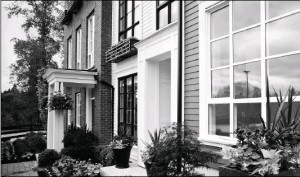Province
Pity the poor taxpayers of Vancouver with Mayor Gregor Robertson and his Visionaries running the show.
While the current council can’t be blamed for the Olympic Village fiasco that has left city residents on the hook for the nearly $1.2-billion project, it must be denounced for not doing everything it can to recoup every last dime from the project — especially when year after year recently they’ve been slamming hardworking homeowners with tax hikes at two and three times the rate of inflation.
Council’s decision last week to pigheadedly carry on with a decade-old plan to put subsidized housing in the waterfront project — at $500 a square foot, very likely the most expensive social housing ever created in North America — shows they are more wedded to their ideology than acting in the best financial interests of the city taxpayers they serve. It is, as Coun. Suzanne Anton calls it in the Vancouver Courier, “a scandalous use of Vancouver taxpayers’ money.”
By last year, the cost of the 252-suite social housing component of the project had risen to $110 million from $65 million — $440,000 per suite. Half of those suites will now be rented to “essential” workers such as cops, nurses and teachers, the wisdom of which was more than adequately addressed Sunday by our columnist, Mike Smyth. The decision shows that council knows in its heart the original plan no longer makes sense.
Robertson’s “first and foremost” argument in his news release explaining why council can’t sell the suites was that the city made a promise to the International Olympic Committee to provide 250 suites of social housing in the village after the Games.
Let us remind him, in case he’s forgotten after rubbing shoulders so frequently with all those IOC VIPS recently: he works for Vancouver taxpayers, not those trough-sucking bureaucrats from Switzerland.
This paper is on record in supporting the need for more social housing in Vancouver and the larger region, and we have lauded Robertson and his colleagues in the past for pushing the issue and getting results. But the Olympic Village plan makes no sense. Any profits from the sale of the suites, as Anton and others have argued, should be used to build social housing at other, cheaper sites at half to a third of the cost.
Further, it’s time council understood city taxpayers are feeling tapped out and can’t constantly be asked to provide seemingly endless social services to the city’s poor.
Council should be using its energies to continue to push the provincial Liberals to help out, as they have, and get more militant in demanding the federal Tories start tackling social-housing issues.
Ottawa‘s continued abandonment of this nationwide problem is a disgrace.
© Copyright (c) The Province






